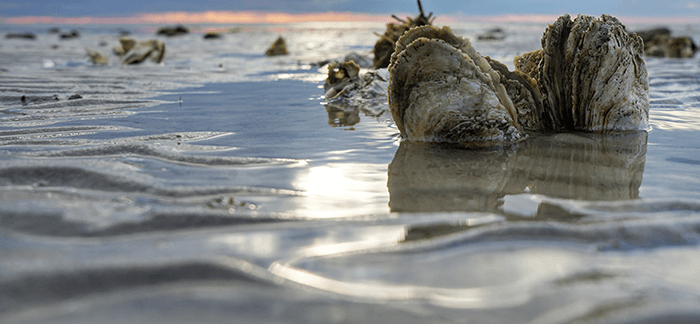As striped bass prepare to spawn in Maryland and Virginia rivers this month, experts believe the species may benefit from the Chesapeake Bay region’s snowier and colder winter. Historically, cold weather conditions have produced strong year classes of striped bass—when reproduction levels are high and young fish can grow into the large, iconic rockfish targeted by anglers.
Experts with the Chesapeake Bay Foundation (CBF) expect a colder winter could support striped bass spawning success this spring. However, winter temperatures are just one factor among many. Maryland and other Bay states are also now experiencing drought conditions, which reduces viable spawning habitat and could negate the positive effects of a colder winter.
Striped bass recruitment, or breeding success, in Maryland has been far below average for six consecutive years. Several conditions including water quality, overfishing, invasive predators like blue catfish, and warming water temperatures due to climate change, could be causing these tragically low numbers. These results are especially alarming considering the Chesapeake Bay produces between 70 to 90 percent of all striped bass on the East Coast.
Each year, the Department of Natural Resources (DNR) conducts a juvenile index survey to measure striped bass recruitment in Maryland. DNR scientists agreed that this year’s cold and snowy winter could result in above-average success.
Striped bass prefer cooler water temperatures. For one, cold winters are better for tiny crustaceans called copepods that juvenile striped bass eat. Additionally, when water temperatures get too warm in the summer months, striped bass are easily stressed and more likely to die when caught by anglers, even if promptly released.
A year of cooler weather could help produce a stronger year of reproduction and could also help scientists indicate whether environmental conditions are the main driver of low recruitment, or if other challenges like invasive species and fisheries management should be more closely considered.
The Atlantic States Marine Fisheries Commission (ASMFC) will convene in May to discuss potential management changes for striped bass fishing, including changing size limits and seasonal closures. It is critical that we consider every possible action to optimize striped bass recruitment and secure the iconic species’ future.
Allison Colden, Chesapeake Bay Foundation Maryland Executive Director, issued the following statement:
“While we were shivering and shoveling this past winter, striped bass were cheering. We are hopeful that last winter’s cold weather might lead to more juvenile striped bass this spring, as we’ve seen in the past. But with a drier and warmer spring, and less predictable weather patterns, we should also use these conditions as a benchmark to reassess why striped bass are struggling and where we need to focus our efforts.
“Many factors that threaten striped bass are near impossible to control—warmer and less predictable temperatures from climate change, and pervasive predators like blue catfish. But there are things we can control, such as when and how we fish for striped bass, and how the fishery is managed.
“We hope that this year’s chilly winter days and frequent snow flurries result in a stronger year class of striped bass. But we also hope ASMFC and fisheries managers are ready and willing to do whatever it takes to save this species before it’s too late.”
Chris Moore, Chesapeake Bay Foundation Virginia Executive Director, issued the following statement:
“While we are all hopeful that nature may offer a temporary boost to striped bass spawning with a colder winter, it is obvious the species is now dealing with a host of stressors that are negatively affecting reproduction. This winter’s weather may lead to more young striped bass this spring, but the long-term climate trends remind us of the likely need for practices to increase the sustainability of the striped bass population.
“The threats of climate change, invasive species, and habitat availability have made striped bass news feel like a rollercoaster. For a species this culturally and economically important, we should seize this moment not just to be hopeful about a possible increase in young fish, but to implement robust management strategies that ensure the long-term health and resilience of striped bass in Chesapeake Bay.”

Maryland Communications & Media Relations Manager, CBF
[email protected]
443-482-2023


